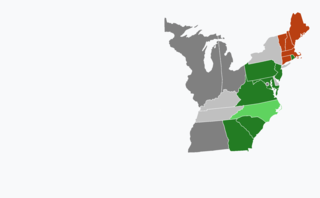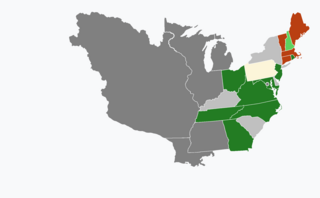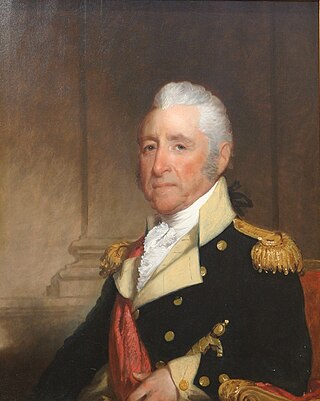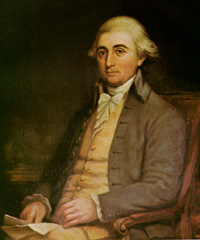| |||||||||||||||||||||||||||||||||
10 state governorships | |||||||||||||||||||||||||||||||||
|---|---|---|---|---|---|---|---|---|---|---|---|---|---|---|---|---|---|---|---|---|---|---|---|---|---|---|---|---|---|---|---|---|---|
| |||||||||||||||||||||||||||||||||
United States gubernatorial elections were held in 1806, in 10 states, concurrent with the House and Senate elections.
Contents
Five governors were elected by popular vote and five were elected by state legislatures.
| |||||||||||||||||||||||||||||||||
10 state governorships | |||||||||||||||||||||||||||||||||
|---|---|---|---|---|---|---|---|---|---|---|---|---|---|---|---|---|---|---|---|---|---|---|---|---|---|---|---|---|---|---|---|---|---|
| |||||||||||||||||||||||||||||||||
United States gubernatorial elections were held in 1806, in 10 states, concurrent with the House and Senate elections.
Five governors were elected by popular vote and five were elected by state legislatures.
| State | Election date | Incumbent | Party | Status | Opposing candidates |
|---|---|---|---|---|---|
| Connecticut | 10 April 1806 [lower-alpha 1] | Jonathan Trumbull Jr. | Federalist | Re-elected, 13,413 (58.27%) [lower-alpha 2] | William Hart (Democratic-Republican), 9,460 (41.10%) Scattering 144 (0.63%) [1] [2] [3] [4] [5] [6] |
| Maryland (election by legislature) | 10 November 1806 | Robert Bowie | Democratic-Republican | Term-limited, Democratic-Republican victory | Robert Wright (Democratic-Republican), 59 votes Charles Carroll of Carrollton (Federalist), 11 votes John Eager Howard (Federalist), 3 votes Thomas Johnson (Federalist), 1 vote [7] [8] [9] [10] |
| Massachusetts | 7 April 1806 | Caleb Strong | Federalist | Re-elected, 36,433 (50.06%) [lower-alpha 3] | James Sullivan (Democratic-Republican), 36,034 (49.51%) Scattering 317 (0.44%) [12] [13] [14] [4] [15] [16] [17] [18] [19] |
| New Hampshire | 11 March 1806 | John Langdon | Democratic-Republican | Re-elected, 15,277 (74.26%) [lower-alpha 4] | Timothy Farrar (Federalist), 1,720 (8.36%) John Taylor Gilman (Federalist), 1,553 (7.55%) Jeremiah Smith (Federalist), 902 (4.38%) Oliver Peabody (Federalist) [lower-alpha 5] , 866 (4.21%) Scattering 255 (1.24%) [20] [21] [22] [4] [23] [24] [25] [26] |
| New Jersey (election by legislature) | 31 October 1806 | Joseph Bloomfield | Democratic-Republican | Re-elected, unanimously [27] [28] [29] [30] [31] | |
| North Carolina (election by legislature) | 27 November 1806 | Nathaniel Alexander | Democratic-Republican | Re-elected, "without opposition" [32] [33] [34] | |
| Rhode Island | 16 April 1806 [35] | Henry Smith (acting) [lower-alpha 6] | Democratic-Republican | No choice. Lieutenant Governor of Rhode Island, Isaac Wilbour, served the term as acting Governor. | Richard Jackson Jr. (Federalist), 1,662 (43.07%) Henry Smith (Democratic-Republican), 1,097 (28.43%) Peleg Arnold (Democratic-Republican), 1,094 (28.35%) Scattering 6 (0.16%) [36] [37] [38] [4] [39] [40] [41] (Legislative election) (held, 15 May 1806) Richard Jackson Jr., 16 votes Nay, 52 votes No choice made. [42] |
| South Carolina (election by legislature) | 9 December 1806 [43] [44] | Paul Hamilton | Democratic-Republican | Term-limited, Democratic-Republican victory | (Second ballot) Charles Pinckney (Democratic-Republican), 73 votes Henry Middleton (Democratic-Republican), 66 votes [45] [46] [47] [48] |
| Vermont | 2 September 1806 | Isaac Tichenor | Federalist | Re-elected, 8,851 (54.97%) [lower-alpha 7] | Israel Smith (Democratic-Republican), 6,930 (43.04%) Scattering 320 (1.99%) [49] [50] [51] [4] [52] [53] [54] [55] [56] |
| Virginia (election by legislature) | 4 December 1806 [57] | William H. Cabell | Democratic-Republican | Re-elected, "without opposition" [58] [59] [60] [61] |

The 1801 Rhode Island gubernatorial election was an uncontested election held on April 1, 1801 to elect the Governor of Rhode Island. Arthur Fenner, the incumbent Governor, was the sole candidate and so won with 100% of the vote.

United States gubernatorial elections were held in 1800, in 11 states, concurrent with the House, Senate elections and presidential election.

United States gubernatorial elections were held in 1801, in 13 states.

United States gubernatorial elections were held in 1802, in 12 states, concurrent with the House and Senate elections.

United States gubernatorial elections were held in 1803, in 12 states.

United States gubernatorial elections were held in 1804, in 13 states, concurrent with the House, Senate elections and presidential election.
United States gubernatorial elections were held in 1810, in 13 states, concurrent with the House and Senate elections.

United States gubernatorial elections were held in 1805, in 13 states.

The 1804 Connecticut gubernatorial election took place on April 12, 1804. Incumbent Federalist Governor Jonathan Trumbull Jr. won re-election to a seventh full term, defeating Democratic-Republican candidate William Hart.

The 1806 Connecticut gubernatorial election took place on April 10, 1806. Incumbent Federalist Governor Jonathan Trumbull Jr. won re-election to a ninth full term, defeating Democratic-Republican candidate William Hart in a re-match of the previous year's election.

The 1809 New Hampshire gubernatorial election took place on March 14, 1809. Incumbent Democratic-Republican Governor John Langdon was defeated for re-election by Federalist candidate, Chief Justice of the New Hampshire Superior Court of Judicature Jeremiah Smith.

The 1821 Massachusetts gubernatorial election was held on April 2, 1821.

The 1820 Massachusetts gubernatorial election was held on April 3, 1820.

The 1812 Massachusetts gubernatorial election was held on April 6, 1812.

The 1811 Massachusetts gubernatorial election was held on April 1, 1811.

The 1810 Massachusetts gubernatorial election was held on April 2, 1810.

The 1808 Massachusetts gubernatorial election was held on April 4, 1808.

The 1807 Massachusetts gubernatorial election was held on April 6, 1807.

The 1809 Connecticut gubernatorial election took place on April 10, 1809.

The 1810 Connecticut gubernatorial election took place on April 9, 1810.